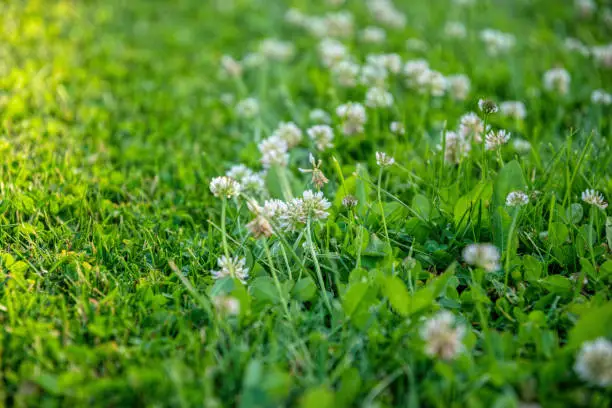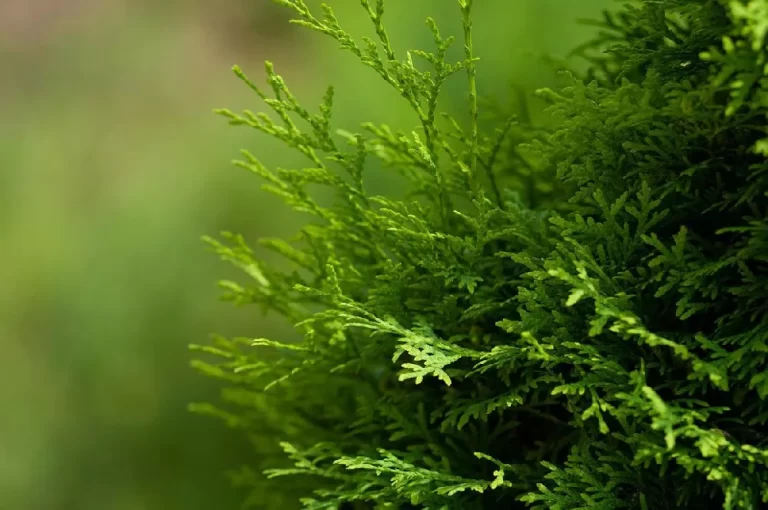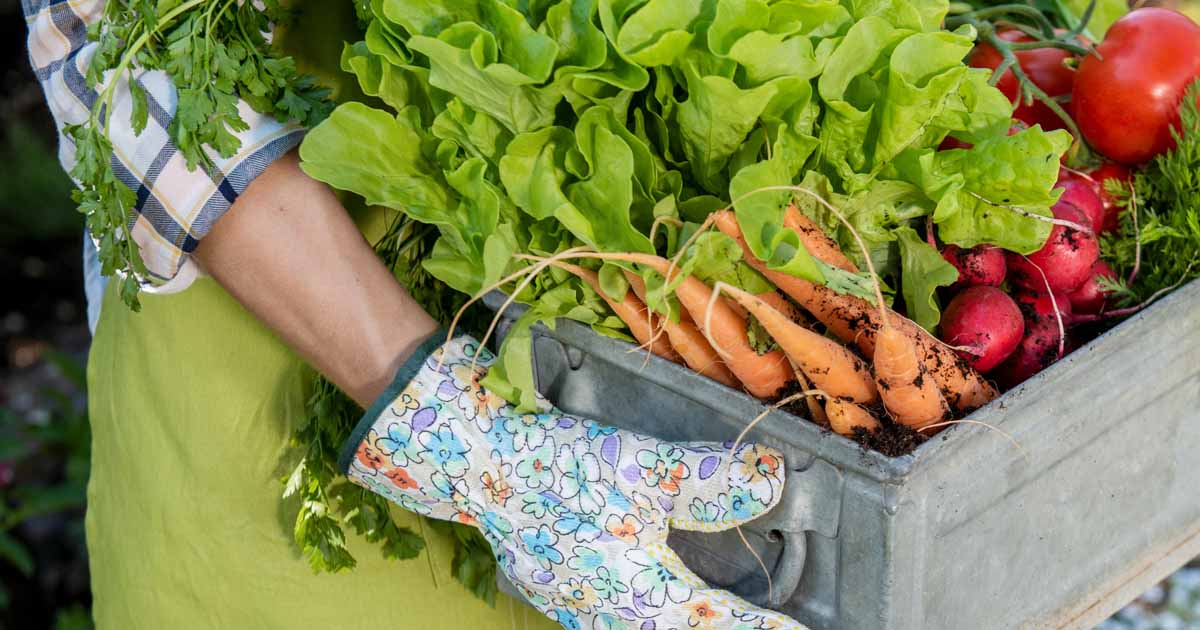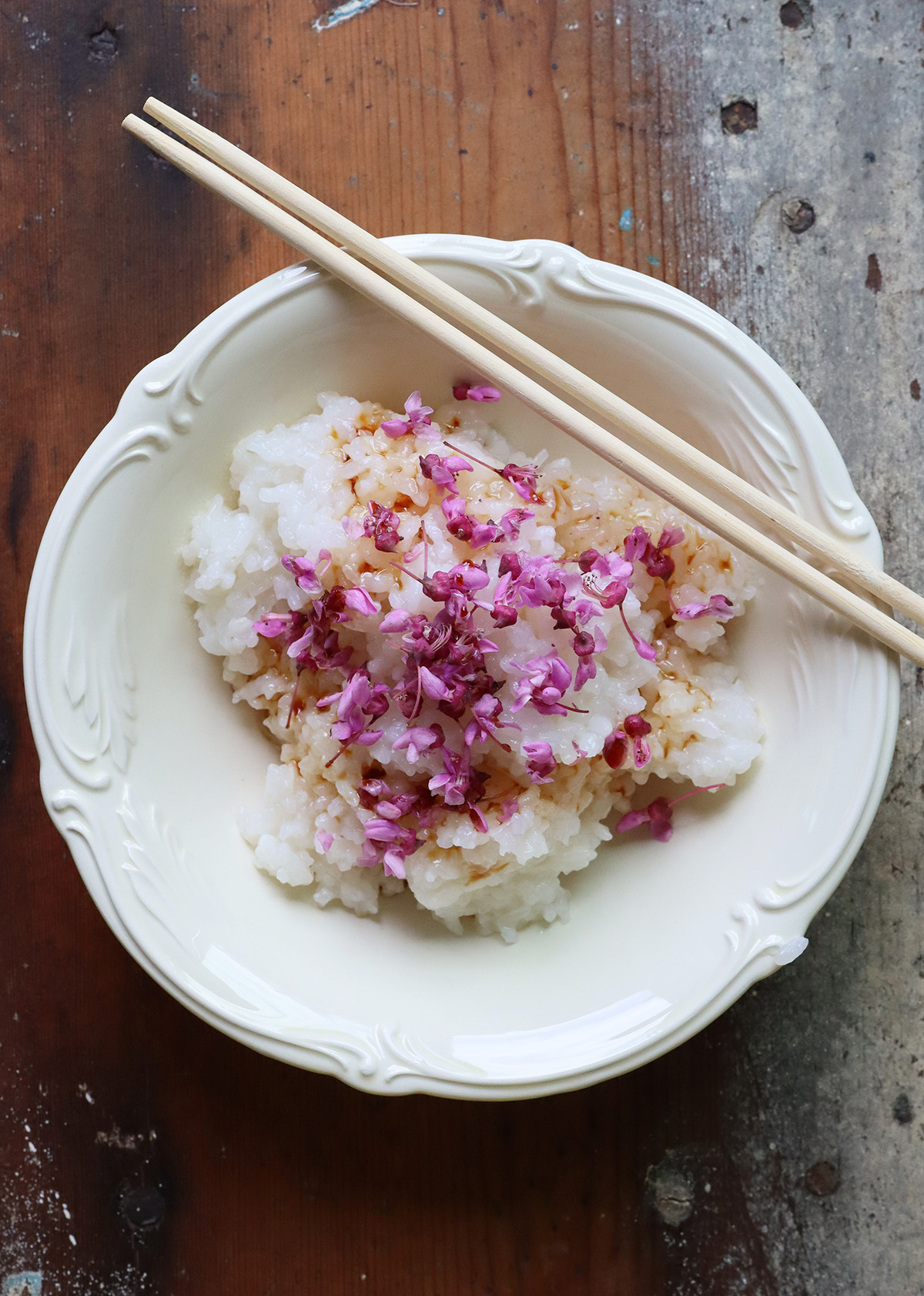9 Causes Your Tomatoes Aren’t Ripening This Season
You’ve labored exhausting to have a tendency thriving tomatoes all spring, however now they gained’t ripen! In case you have a bunch of inexperienced fruits hanging out of your vegetation, it could possibly be an indication that the temperature and soil situations will not be preferrred for vegetation.
Tomatoes want the appropriate surroundings to supply the ethylene (plant hormone) wanted to ripen the fruits and switch them crimson (or orange or purple).
Temperature fluctuations are the commonest explanation for tomatoes that aren’t ripening. Below-watering and over-fertilizing are different possible culprits for inexperienced tomatoes hanging on the vine.
Tomato vegetation require reasonable temperatures, steady moisture, and correct nutrient ranges to ripen their fruit. As soon as a tomato plant has produced flowers and cross-pollinated, the fruit begins to develop. Relying on the sort of tomato plant you develop, the early levels of fruiting will range. Plan on round 40-50 days for a slicer tomato and 20 to 40 days for cherry tomatoes.
As soon as the fruit has reached its full dimension (“mature inexperienced”), the plant shifts its consideration towards ripening. In case your fruits gained’t ripen, it’s possible attributable to one of many components I’ll focus on in additional element under.
Chilly Temperatures

Tomatoes require temperatures between 60 and 80°F to ripen correctly. In line with Purdue College, the best vary is 68-77°F. The additional temperatures stray from this vary, the much less possible fruits are to show crimson.
Chilly nights are significantly problematic as a result of they stress out the plant and halt the ripening course of. When chilly nights alternate with scorching days, your vegetation might have plenty of inexperienced fruit.
The Resolution: Shield your vegetation with row material or low plastic tunnels. Material or plastic buffers tomatoes from temperature fluctuations and provides additional heat throughout chilly nights. The secret’s to take away the row material or open up the tunnels through the day to permit continued pollination of flowers.
Too A lot Fertilizer

Tomatoes are heavy feeders, however an excessive amount of nitrogen fertilizer on the time of fruiting can stop tomatoes from ripening. The obvious symptom of extra nitrogen will probably be lush, leafy vegetation with little to no fruit. Blossoms might fall, and any fruit that types might stay inexperienced for an extended time frame.
Most vegetation require their nitrogen through the vegetative progress section whereas they set up roots, stems, and leaves. When the plant shifts to the reproductive section, it wants extra phosphorus and potassium to gasoline flower, fruit, and seed manufacturing.
An excessive amount of fertility may manifest as:
- Overgrowth of leaves
- Weak vines
- Delayed flowering
- Poor fruit set
- Oddly formed fruits
- Hole fruits
- Blossom finish rot
The Resolution: As soon as a tomato plant is established and huge sufficient to fruit, cease fertilizing. Keep away from feeding a tomato plant nitrogen proper earlier than it flowers. It’s best to fertilize your tomatoes with all-purpose, slow-release fertilizer on the time of planting.
When vegetation begin to flower, you’ll be able to optionally present a dose of natural fertilizer that’s excessive in phosphorus and potassium for the fruiting section. If you have already got a variety of compost and natural matter in your soil, this will not be essential.
To neutralize extra nitrogen, add a small quantity of bone meal or colloidal phosphate to the soil. It’s also possible to flush the soil with water and combine extra compost into the higher layers.
Overwatering

We all know that tomatoes are thirsty vegetation. Nonetheless, an excessive amount of water through the fruiting section can inhibit ripening and cut back the flavour of your tomatoes.
Once I was an expert vegetable farmer, we at all times in the reduction of on water proper when tomatoes started to ripen. This ensured most shade change and sugar accumulation within the fruit. Nonetheless, you shouldn’t let the soil dry out utterly, or you could stress out the plant.
The Resolution: Verify the soil close to your tomatoes earlier than watering. If the soil is soggy, chorus from irrigating for a number of days. The higher inch or two of soil will be reasonably dry.
If you happen to wait till the leaves start to wilt barely earlier than you water once more, it could push the plant to ripen its inexperienced fruit.
Warning: This system is simply for use within the remaining levels of fruiting when a plant has plenty of mature, inexperienced fruit hanging on the vines. Don’t withhold water through the vegetative and fruit progress section! An excessive amount of water stress might trigger the tomato plant to cease producing completely. Stability is vital!
Extreme Warmth

Durations of maximum warmth can sluggish or halt tomato ripening. If warmth is the issue, you’ll most likely discover greenish-yellow or yellow-orange fruits. The fruits often begin to ripen till the scorching warmth stalls their progress.
Tomatoes can’t produce carotene and lycopene—the pigments that give ripe tomatoes their shade— in temperatures above 85°F. This warmth stress is compounded when vegetation don’t have sufficient water.
The Resolution: Whilst you don’t have management over the climate, you’ll be able to take steps to guard your tomatoes from extreme warmth. If you happen to stay within the north, this possible isn’t essential. Nonetheless, southern growers may have to make use of a number of of those strategies to buffer in opposition to extraordinarily scorching climate:
- Mulch the soil with shredded straw or leaves to protect moisture and preserve the roots cool.
- Use shade material to guard leaves and fruit from sun-scalding.
- Plant tomatoes in an space the place they obtain barely dappled afternoon shade (an excessive amount of shade will be dangerous).
- Use drip irrigation, soaker hoses, or an olla to make sure constant soil moisture.
- Keep away from over-pruning. Eradicating too many leaves can go away fruits uncovered and weak to excessive warmth.
Tomatoes clearly love heat and sunshine, however southern summers might name for planting a number of successions of tomatoes that may harvest within the milder climate of late spring and early fall.
Worst case state of affairs, you’ll be able to preserve watering and caring on your vegetation whilst you anticipate cooler climate. The fruits will start to blush and produce lycopene and carotene pigments as quickly as temperatures persistently fall under 85°F within the evenings.
Underwatering

Watering is at all times a steadiness. An excessive amount of moisture and your tomatoes might crack, however too little moisture and the plant gained’t have the vitality it wants to supply these juicy tomatoes in any respect.
Tomatoes want about 1-2 inches of water per week to realize optimum progress. If you happen to’re rising in containers or in additional scorching climate, your vegetation might require extra irrigation.
Tomatoes that don’t get sufficient water within the preliminary levels of fruiting usually tend to:
- Droop or wilt
- Have brown, shriveled leaves
- Drop their flowers
- Develop small, stunted fruit
- Produce fruit with Blossom Finish Rot
- Cease ripening their fruit
The Resolution: Verify your tomato beds each 2-3 days to make sure the soil feels moist and the leaves seem perky and hydrated. Your plant will clearly talk if it’s thirsty by wilting, shriveling, or drooping. Fruit might seem stunted or dried out.
If you happen to stick your finger 4-6” into the soil and your pores and skin comes out dry, the roots are possible very dehydrated! Give them a deep watering and examine again in a few days. For potted tomatoes, water deeply till water pours out of the underside drainage gap.
Sunscald

Tomatoes are sun-lovers, however the fruits will not be meant to be uncovered to direct solar rays all day size. Tomato vegetation which might be defoliated by pests, ailments, and over-pruning are weak to sun-scalded fruit.
The tough rays of daylight on the inexperienced tomatoes may very well inhibit ripening. You possibly can usually see brown, whitish, or yellow blisters creating on the edges of the fruit that face the solar. The areas might turn into papery or moldy.
The Resolution: Keep away from eradicating leaves to ripen tomatoes. That is an city delusion that will trigger extra hurt to your plant than good.
Maintain your tomato vegetation protected in opposition to pests and ailments. Preserve as a lot lush foliage as attainable. If the fruit is uncovered, you’ll be able to cowl it with a light-weight materials like shade material to shelter it from intense gentle.
Brief Daylength

Gardeners usually discover that their tomatoes have hassle ripening on the very finish of the season. Tomatoes are confirmed to be a photosensitive species, which suggests they reply to the day’s size. When the sunny days of summer season start to fade, the decreased sunlight hours inform the plant that it’s getting into the tip of its lifecycle. This shift usually coincides with the Autumn Equinox.
Day size is much less problematic the nearer you get to the equator close to the tomato’s pure habitat. Northern growers are inclined to have extra hassle ripening autumn tomatoes.
The Resolution: Harvest any fruit remaining on the vegetation and produce them indoors to ripen. They will not be as tasty as summer season vine-ripened tomatoes, however not less than they gained’t go to waste!
Place tomatoes in your countertop at room temperature close to bananas or apples. These fruits produce plenty of ethylene to advertise tomato ripening. It’s also possible to put tomatoes in paper luggage to pay attention the ripening hormone.
Don’t place tomato fruits within the fridge. This can stall ripening and result in a bland taste.
Excessive Magnesium

There may be some proof that extra magnesium harms tomato fruit ripening by altering the plant’s amino acid and metabolite ratios. Magnesium straight impacts how the plant uptakes calcium and potassium, which suggests a mineral imbalance can have a ripple impact on yields, progress, and taste.
An extra of magnesium salts can result in:
The Resolution: Keep away from making use of magnesium to your soil until you recognize there’s a deficiency. In most residential soils, that will be “by no means” – as a result of magnesium deficiencies usually materialize in heavily-overfarmed soils, and gardeners hardly ever expertise such points! If you happen to ever add magnesium to the soil, guarantee it additionally has calcium. These minerals work together collectively. By no means use Epsom salt on your tomatoes; that’s a standard backyard delusion, and it could usually make blossom finish rot worse.
In naturally excessive magnesium soils, you’ll be able to add a small quantity of gypsum (calcium sulfate) yearly to slowly cut back the salt focus.
Low Potassium

If you happen to discover fruits ripening erratically (blotches or giant parts of fruit stay inexperienced whereas one other facet turns crimson), this could possibly be an indication of low potassium. Tomatoes naturally ripen from the underside up and from the within out. When fruits show bizarre ripening patterns and the above points have been eradicated, it’s time to deal with any mineral imbalances.
Indicators of irregular ripening attributable to potassium deficiencies embody:
- Uneven ripening of fruit
- Yellow “shoulders” on fruit
- Blotchy ripening
- Margins of latest leaves flip yellow
Potassium deficiencies are significantly problematic when there’s an excessive amount of phosphorus within the soil.
The Resolution: Analysis exhibits that including potassium sulfate can cut back incidences of ripening issues. Kelp meal, hardwood ashes, and greensand are nice natural choices. Comply with the fertilizer package deal directions so as to add these supplies across the time your tomatoes start fruiting.
Higher but, feed vegetation with a fruiting-phase fertilizer on the time of flowering.
Remaining Ideas
Whereas there will be many causes for tomatoes not ripening, the commonest trigger is excessively chilly or scorching temperatures. The easiest way to buffer in opposition to temperature fluctuations is to cowl your tomatoes with a row cowl at night time and/or use shade material to guard them from extreme warmth.
If you happen to repair these components and nonetheless can’t get your tomatoes to ripen, it’s finest to reap the inexperienced fruits and ripen them indoors in your countertop.








